3-door double-deck buses have entered service in 2021 with the introduction of two new bus models: the Alexander Dennis Enviro500 (3 Door) and the MAN A95 (Euro 6) – 3-Door.
Whilst the two bus types appear similar from the outside in their placement of doors, they differ significantly in interior design and reflect different approaches in delivering this unique batch of 3-door low-floor double-deck buses for the Singapore market.
Procurement & Specifications
These buses were procured by the Land Transport Authority under Contract PT342 (Procurement of 3-Door Euro 6 Double Deck Diesel Buses) for over S$60 million. In total, 100 three-door diesel buses were procured, with Alexander Dennis (ADL) and ST Engineering Land Systems fulfilling 50 buses each.
Both manufacturers had also provided three-door concept buses for an LTA carnival in 2016, namely the Alexander Dennis Enviro500 Mock-up and the MAN Lion’s City DD L Mock-up. Having the virtue of being delivered with a functional powertrain, the MAN Concept Bus would later enter revenue service trials with Tower Transit and SBS Transit.
The third door and second staircase were intended to improve commuter flow. With a smoother boarding and alighting process, dwell time at bus stops would be reduced, particularly on bus routes that encountered heavy passenger demand.
| S/N | Buses | Tenderer | Sum Awarded |
| 1 | Alexander Dennis Enviro500 (3 Door): 50 units | Alexander Dennis (Singapore) Services Pte Ltd | S$34 million |
| 2 | MAN A95 (Euro 6) – 3-Door Batch: 50 units | ST Engineering Land Systems Ltd | S$30 million |
Awarded sums are as per LTA Press Release.
Some requirements of the buses were:
- Euro VI-compliant diesel engine
- Three doors (one entrance + two exit doors) and Two staircases
- Rear staircase should not be forward-facing
- Low floor layout
- Rearmost exit door must be located behind the rear axle
- Maximum length of 12.5 metres
However, both manufacturers took different technical approaches in fulfilling these requirements, leading to significant design differences between the two bus models, particularly around the rear door area.
Due to design constraints arising from modifying the existing MAN A95 bus chassis as a three-door bus, the passenger cabin is not full-low-floor, and alighting from the rear door requires passengers to descend from two steps. On the other hand, significant design effort gave the ADL Enviro500 a full-low-floor layout, with the rear staircase conveniently leading directly to the third door. This article will discuss the differences between the two models.
Additional LTA specifications (Click to expand)As with all new buses, the 3-Door buses are equipped with:
- Passenger Information Display Systems with audio announcements
- Driver collision warning system and anti-fatigue system
- Two wheelchair bays and stroller restraint
- Centre pole removed at the front door to facilitate stroller boarding
- Automatic passenger counters at all entrance and exit doors
Why the need to have three doors and two staircases?
The conventional double-deck bus design has a single staircase, which limits passenger flow to one direction at a time. At bus stops, boarding passengers must wait for all upper deck passengers to disembark before moving into the bus, leading to long wait times at bus stops with high volumes of boarding and alighting passengers.
The new bus design introduces a second staircase at the rear of the bus for alighting passengers. Having two unidirectional staircases improves commuter flow by separating the flow of boarding and alighting commuters, and this is complemented by a third door on the lower deck to speed up passenger alighting.
As a whole, the three-door, two-staircase design promotes passenger flow onboard buses, and are most useful on bus services that encounter a high rate of boarding and alighting passengers at en-route stops, such as trunk services plying congested corridors, or feeder bus services.
Previous three-door, two-staircase buses
While the New Bus for London made show visits to Singapore back in 2014 and again in 2016, the first to enter revenue service trials was the MAN A95 (3 Door) Concept Bus, which made its debut in 2017. This one-off concept bus featured a front-facing exit staircase that led to a third door, adjacent to the existing exit door.
The trial was sufficiently successful for LTA to consider procuring more buses of the three-door, two-staircase variety. However, it is believed that the design of the front-facing rear staircase was unfavourable, as passengers were at risk of falling forwards when the bus had to brake abruptly. A retractable barrier was retrofitted after its debut to prevent upper deck commuters from accessing the rear staircase when the bus is moving, and new buses procured would not have staircases of this design.
Chassis Design Challenges
Prior to this tender, European bus manufacturers typically made full-low-floor chassis targeted at their domestic left-hand-drive (LHD)-dominant market. As a result, drivetrain components are offset to the left of the chassis to accommodate a full-low-floor design and an optional third door at the rear (example: Volvo B5LH drivetrain).
Given that the tender called for a right-hand-drive (RHD), full-low-floor diesel bus with a third door at the rear overhang, bus manufacturers faced the challenge of modifying existing designs to fulfil this (relatively) small batch of buses in the most economical way.
Alexander Dennis approach
Alexander Dennis Limited (ADL) had relocated the engine and drivetrain components of the Enviro500 (3-door) buses to the right of the chassis, likely requiring significant engineering effort. This new powertrain layout allows for a full-low-floor right-hand-drive bus, the first of its kind for ADL.
The ADL Enviro500 (3 Door) has opted for a transverse engine layout, similar to that of the Volvo B9TL. The rear axle is now the drive axle, instead of the middle axle. In addition, passive steering was also implemented on the middle axle to decrease tire wear and improve low-speed manoeuvrability, similar to that used on the Volvo Olympian.
ADL had previously delivered 3-door Enviro500 units in left-hand drive (LHD) specification to Transports publics de la région lausannoise (TL) and PostAuto in Switzerland; and to Berliner Verkehrsbetriebe (BVG) in Berlin, Germany. While Enviro500 buses typically feature Cummins engines, the BVG units are fitted with the Mercedes-Benz OM936 engine from Daimler. LTA-ordered units feature the same Mercedes-Benz OM936 engines.
One unique consequence of the redesign is that the rear axle is now the drive axle, instead of the middle axle.
As for the Enviro500 chassis, ADL previously delivered 216 Enviro500 such buses in the conventional layout. The first batch (201 units) entered service between Jun 2014–Dec 2015, and the second batch (15 units) entered service in August 2017, all of which were Euro V-compliant.
ST Engineering-MAN approach
ST Engineering (Land Systems) and MAN managed to modify the existing MAN A95 chassis into a three-door bus without changing the drivetrain layout, but necessitated having a raised lower deck rear floorboard to accommodate underfloor components, particularly the transmission and driveshaft which connect the engine to the drive axle.
As a result, the 3-door MAN A95 (Euro 6) buses are not full-low-floor. The aisle area near the third door is raised, and the additional headroom required on the lower deck protruded into the upper deck, necessitating a unique upper deck rear seating layout with side- and rear-facing seats.
The MAN A95 chassis also had an established presence in the Singapore market since 2014, with over 470 units currently in operation as of January 2021, with more buses yet to be registered/delivered.
Rear Door area – Exterior
The Alexander Dennis Enviro500 (3-door) is a full-low-floor bus, where the lower deck aisle has no steps between the front and rear door. To accommodate this feature, Alexander Dennis had managed to modify all powertrain components to the right side of the vehicle and underneath the rear staircase.
On the other hand, the 3-door MAN A95 (Euro 6) buses are not full-low-floor. By modifying the existing MAN A95 chassis into a three-door bus without changing the drivetrain layout, the lower deck rear floorboard was raised to accommodate underfloor components, particularly the transmission and driveshaft which connect the engine to the drive axle.
As a result, alighting passengers have to descend two steps while alighting from the bus.
Rear Door area – Interior
The full-low-floor configuration and straight aisle offered by the ADL Enviro500 (3-door) facilitate easy passenger movement around the lower deck of the bus. Forward and rear-facing seats are mounted above the wheel wells, similar to existing Enviro500 buses.
On the MAN A95 (3-door) bus, the aisle area near the third door is raised by one step. The additional headroom required on the lower deck protruded into the upper deck, necessitating a unique upper deck rear seating layout with side- and rear-facing seats.
At the same time, the odd geometry of the aisle leaves raised sections of the floorboard at the sides, indicated in yellow, where passengers are not supposed to step on. Doing so might lead to head injury due to the limited headroom on the lower deck.
Rear staircase landing
The rear staircase of the ADL Enviro500 (3-door) is located at the rear end of the bus, mirroring that of the Alexander Dennis Enviro500 Concept Bus first exhibited in 2016 (which had no engine), and similar 3-door, 2-staircase Enviro500s delivered to left-hand-drive markets in Berlin and Switzerland. The staircase landing is located directly at the third door, such that alighting passengers from the upper deck can easily step off the bus.
On the other hand, the MAN A95 (3-door) bus has its staircase fitted about a metre away from the third door. Alighting passengers from the upper deck have to navigate the narrow rear aisle, ascending one step and descending two steps before alighting from the third door. This layout is significantly more inconvenient for passengers and might discourage the use of the third door, especially since there are no steps to the middle alighting door.
For both buses, the third door width is narrower than the front two doors on both buses. A single-leaf sliding door is used.
Rear staircase on ADL Enviro500 Concept Bus (Click to expand)Both manufacturers have also not used the front-facing staircase design featured in the MAN A95 3-door Concept Bus (SG5999Z). It was believed that feedback from the revenue service trial was unfavourable with regards to the safety of the front-facing rear staircase, which put passengers at risk of falling forwards when the bus had to brake suddenly. A retractable barrier was retrofitted after its debut, which prevents upper deck commuters from accessing the rear staircase when the bus is in motion, and only opens when the bus is at a stop.
The MAN A95 3-door Concept Bus (SG5999Z) was last operating in December 2020 and returned to revenue service in late January 2021, after over a month of hiatus.
Ride height & long overhang
The suspension ride height on the 3-Door MAN A95 (Euro 6) buses is also adjusted lower than that of other MAN A95 buses. While the reduced ground clearance aids boarding and alighting (especially with the third door), the feature also exacerbates ground strikes due to the reduced approach and departure angles, especially over humps.
The long rear overhang is also at risk of kerb strikes should buses execute sharp turns close to the kerb (e.g. turning out of bus stops). This has been observed to cause problems for the third door should the rear panel get dislodged, which interferes with the movement path of the third door.
Concluding remarks
The inherent limitations of configuring the MAN A95 chassis as a 3-door bus without relocating the powertrain components makes for a rather inconvenient interior layout. Towards the rear of the bus, the aisle is narrow and requires ascending and descending steps, which reduces the speed of passenger movement. The second staircase landing is not located directly at the third door, possibly discouraging the use of the third door, given that reaching the middle exit door does not require ascending and descending steps
On the other hand, the layout of the ADL Enviro500 (3-door) is far more convenient for passengers. The full-low-floor layout is ideal for passenger movement, and the rear staircase leads directly to the third door, which encourages upper-deck passengers to exit from the rear door of the bus. Despite the small volume order, it is encouraging to see that ADL had managed to modify the powertrain layout for the benefit of passengers.
Debut
The 3-Door MAN A95 (Euro 6) was first showcased on 11 January 2021 at a media event held at Bulim Bus Depot. These buses entered service on 28 January 2021 with Go-Ahead Singapore, and by mid-February, all four PTOs (SBS Transit, SMRT Buses, Tower Transit, Go-Ahead) have been operating these buses on the roads.
The Alexander Dennis Enviro500 (3 Door) commenced revenue service on 26 October 2021. By the end of 2021, three PTOs (SBS Transit, SMRT Buses & Tower Transit) operate this model of buses.
Comparison table
| Alexander Dennis Enviro500 (3 Door) | MAN A95 (Euro 6) – 3-Door Batch | |
| Manufacturer | Alexander Dennis Limited (ADL) | MAN Truck and Bus |
| Bodywork | Enviro500 3D2S (Facelift) | MAN Lion’s City, built by Gemilang Coachworks |
| Length | 12.5 m | 12.5 m |
| Passenger capacity | Seating (Upper deck): 51 | Seating (Lower deck): 18 | Standing: 63 | Total: 132 | Seating (Upper deck): 50 | Seating (Lower deck): 17 | Standing: 56 | Total: 123 |
| Engine | Mercedes-Benz OM936, 7700cc Power/torque rating of 260 kW (354 hp) @ 1800 rpm / 1400 Nm @ 1200 – 1600 rpm |
MAN D2066 LUH-58 Power/torque rating of 235 kW (320 hp) @ 1900 rpm / 1600 Nm @ 1000 – 1400 rpm |
| Transmission | Voith DIWA 864.6 gearbox, four-speed automatic | ZF EcoLife 6 AP 2000 B gearbox, six-speed automatic |
| Second staircase | Half-turn staircase located at rear end of bus | Straight staircase located at rear right side, above the middle axle. Descends towards the rear. |
| Second staircase landing | Next to third door | In between second and third door |
| Accessibility | Full-low-floor design without steps | Low entry; steps required for third door access |
See also:
- Alexander Dennis Enviro500 (3 Door) | Land Transport Guru
- MAN A95 (Euro 6) – 3-Door Batch | Land Transport Guru
- Alexander Dennis Enviro500 | Land Transport Guru
- MAN A95 (ND323F) | Land Transport Guru
- The making of a bus – MAN Lion’s City DD | Land Transport Guru
References:
- LTA | News Room | News Releases | LTA to Deploy Three-Door Double-Deck Buses from 2021 [Accessed 11 Jan 2021]
- Land Transport Authority – We Keep Your World Moving – Posts (facebook.com) [Accessed 11 Jan 2021]
- Three-door double-decker buses to hit the road from this month, Singapore News & Top Stories – The Straits Times [Accessed 12 Jan 2021]
- Alexander Dennis launches Class II interurban Enviro500 double deck at Busworld Europe | Alexander Dennis (alexander-dennis.com) [Accessed 21 Jan 2021]
- Alexander Dennis wins Berlin contract for new double decker fleet | Alexander Dennis (alexander-dennis.com) [Accessed 21 Jan 2021]
- 50 new Alexander Dennis Enviro500 double deckers for Singapore in new three door, two staircase layout | Alexander Dennis (alexander-dennis.com) [Accessed 21 Jan 2021]
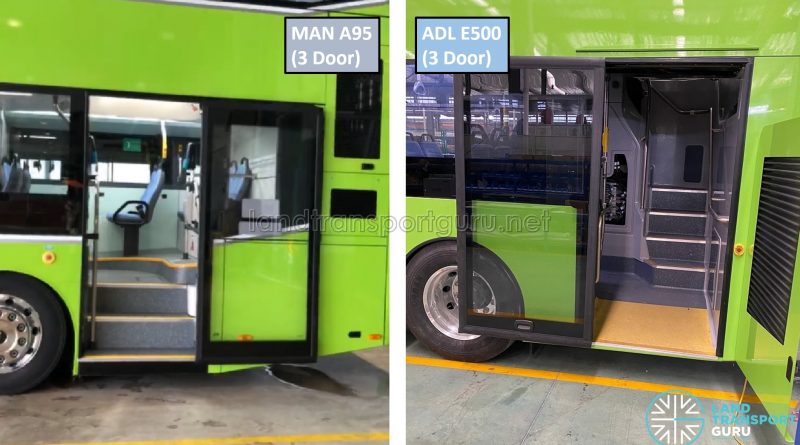
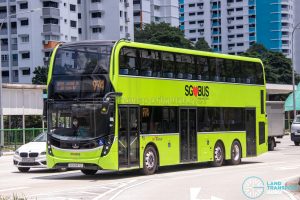
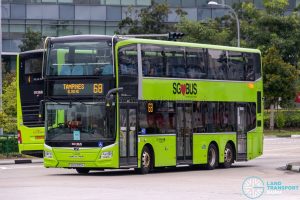
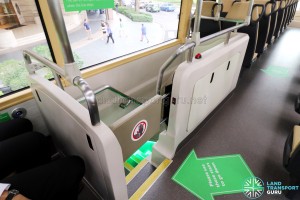
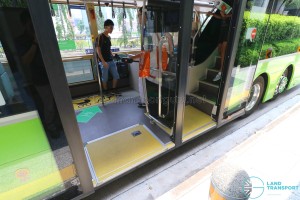
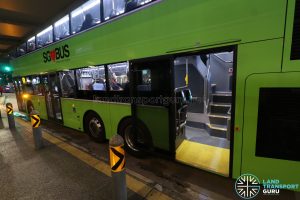


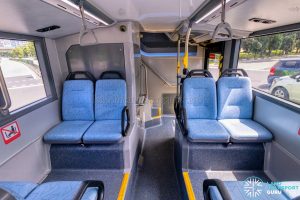
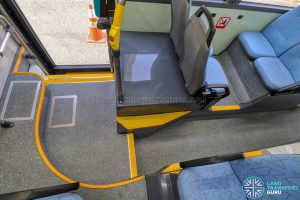
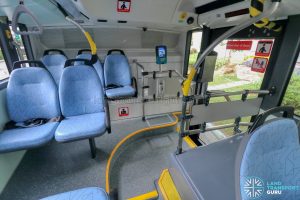
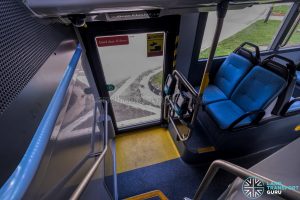
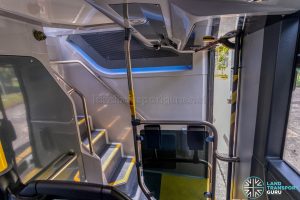
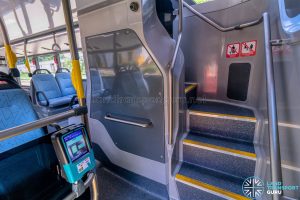
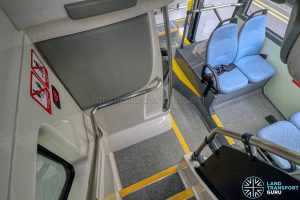
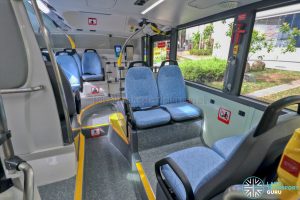
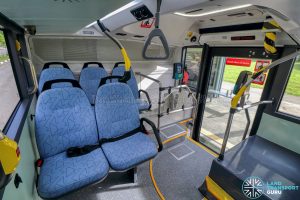
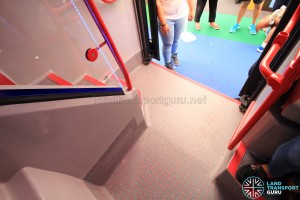
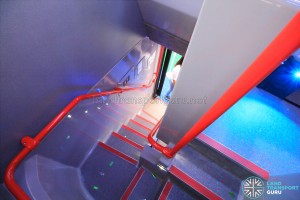
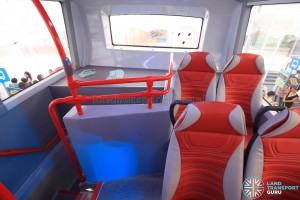
Next order another 50 units three door with full low floor and make it compulsory for MAN,else award to other manufacturers.Also we need 12.5m SD three doors.First batch of KUBs should be scrapped or sold overseas
What kind of weird flip-flop world are we living in where the Germans bodge and accommodate while the Brits re-engineer perfectly
One is to impress LTA,Another already established and well back up by ST.But again the new ADL RAS will be at centre?
I hope that ADL 3dr will go to service 179
SG5999Z is not seen on service lately? Could it be that it is under maintenance? Or will it be transferred to another operator?
@Itankk Or maybe it was sadly taken out of revenue service. :/
I just took it in November
I think game over since LTA already get the 50 three door MAN DD
If really game over, then it is a big waste to not let another operator (either SMRT or GASG) operate this bus since it still has so many years of service life ahead and the engine is still working. Same for SG4002G.
Back to Bndep after new fuel tank and maintenance.
i took the man a95 euro 5 3-door recently. turns out it was just at bedok nth depot for maintenance and is now back on its usual service 7
I would prefer the MAN bus due to the steps not being very high as compared to the steps featured on ADL. Descending the high steps in ADL when the bus is in motion would have a high chance of missing the step and falling down. For the MAN bus, the steps are not so high which would be easier for descend.